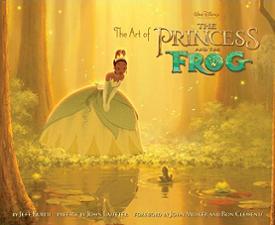Jeremie Noyer continues his multi-part discussion with Mark Henn, presenting a new chapter each fortnight in celebration of the worldwide launch of The Princess And The Frog from the US release to its European debut, and evoking the chronology and different aspects of the veteran animator’s career, from his studies and dreams of working for Disney, to his first assignments and serving as supervising animator on the Studio’s current contemporary classic!
Mark Henn is not only one of the finest Disney animators ever. He’s also a specialist of American history and a sculptor of great figures, both well-known and unknown. So, no doubt this influenced his decision to be involved in Disney’s projects related to that topic, such as the John Henry short or the animated feature Home on the Range.
Here are his memories of that time when artists were wondering if the Sun would Ever Shine Again on Disney animation…
Animated Views: You’re well-known for your passion for American history.
Mark Henn: It kind of goes back to my childhood. I grew up in the Midwest of this country which is close to a lot of American history. I’ve just always had a strong interest in American history and the people and the events that helped shape the country – good things and bad things. One element that’s particular to American history is the fact that, unlike a lot of places in the world, we’re very close to our history in a time line. I mean, the United States as a formal nation is just a little over 230 years old. That’s, I know, compared to Europe, and other places in the world, just a drop in the bucket! You have the idea that a person here can just look back a few generations in your family line, and you’re back maybe in the Civil War, and just a few more and maybe you’re back to the American revolution, depending on when your ancestors made the move over to this country. I just think that’s very fascinating.
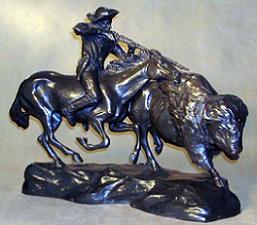
AV: Is it because of this interest that you wanted to direct the animated short John Henry?
MH: That’s partly true. John Henry as a story was just always one of my favorites as a child both because of its historical nature but I also love the message, the story behind it: man and machine playing out against each other. That’s something that I have always had in the back of my mind, something that I always would like to have done. I had that opportunity right after Mulan so we produced and made that in Florida before I moved back to California.

AV: Was a deliberate choice to become a director?
MH: For that project, yes, it was. I thoroughly enjoyed putting a team together and working with them. One thing that we have always had around here at the studio is just an amazing talent pool. And to work with people that, in a lot of areas, know their job a lot better than you do, is just a real treat. That’s one of the joys I find in directing. I would very much like to have that opportunity again.
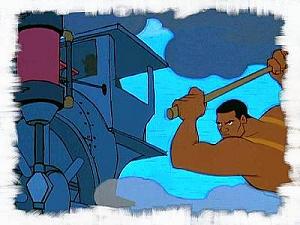
AV: Before its closure in 2002, the Florida studio had begun working on My Peoples, another American subject. Were you involved in any way in that?
MH: No, I wasn’t. I had already moved back to California. That was in 1999. I finished up John Henry and came back to California.
AV: The design of John Henry is very interesting and very unusual. Can you tell me about it?
MH: Even though it’s a short, we took our time to do some extensive research. We kind of took our inspiration from two sources, both African-American. We looked at “quilting”, the idea of what was known as “story quilt” which was very prevalent during the Civil War and 19th century America. Then we also looked at a lot of African-American artists of that period that were known to be called part of the Harlem Renaissance movement which was a very amazing time-frame in the early 20th century of African-American artists in the Harlem area in New York. There was just kind of an explosion of artists and we looked at a lot of artists of that time frame, that was also very inspirational.
I guess the third element was the scratchboard technique that we kind of re-discovered. It’s one of those things you learn in colleges and it had a dynamic that we liked. We had a children illustrator by name of Pinkney whose illustrations were done in that technique and he came in and helped work with our background painters to help them understand it and what you could do with that, all done by hand. We wanted to make something different, something we don’t normally get to do on a feature, but the short allows a little more flexibility in that sense.
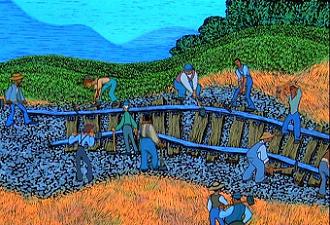
AV: You were pretty involved in Home on the Range since you animated several characters.
MH: Yes, I did quite a few!
AV: At the time, it was said to be the last Disney 2D animated feature. So, what is your position regarding the debate opposing 2D and 3D animation?
MH: I think there’s room for both. They each offer unique abilities. I mean, there’s things that you can do in 3D that you can’t do in 2D and vice versa. 2D can accomplish certain looks that you can’t get in 3D. But they’re really two different things; they’re apples and oranges, the way I look at it. I think that what has been done by Pixar and other studios proves it’s an art form, a style of filmmaking or at least a style of animating that’s going to stick around. There’s certainly room to include 2D films in the future. Both of them hinge on common elements and that’s good story and compelling characters.
I think that the fans of 3D are wearing off a little bit and people have kind of got over that. Now, they want what they have always wanted: a good story with compelling characters, whether that’s done in 2D or in 3D. The people I’ve talked to don’t seem to really have a preference. They tell me they miss 2D animation, they would like to see it. So, I think that how you execute it is really secondary to the story you’re choosing to tell. Audiences just want believable characters to get involved with. And that’s kind of where I come down on it at this point.

AV: So, how do you explain the mixed success of Home on the Range? Because 2D wasn’t “fashionable” at that time or because of story problems?
MH: It’s hard to say. I think there’s a little of all those things that you mentioned. Maybe the story was not as strong as it could have been. There were story problems throughout this production. I don’t know if people didn’t go to see it just because it was 2D. The movie business is very complicated. You put your heart and soul into a project, you believe you did the very best you can, you put it in the market and hope that more people than that will also agree with you. That one just did not do as well as we thought, I don’t honestly know why. At that time, people on the street were more interested in 3D.
AV: What elements guide you in your choice before deciding to supervise a character?
MH: That’s a good question. I look at the challenges in terms of the role. I basically approach it like an actor would approach a big offer for a particular role in a film –is this role interesting? If it’s a small role, but an interesting role, that would be worth doing it. So I basically look at the role, imagine myself in that role, what I can bring to it, to the character.
AV: Many Disney 2D animators have now been trained in 3D.
MH: I worked on Meet the Robinsons as an animator on Lewis a little bit, and then I worked on some of the family members.
AV: Do you see any differences between the ways Disney and Pixar approach animation?
MH: Actually, there are very little differences since John Lasseter and a lot of the core group of people at Pixar used to work here at Disney and particularly John. So, he grew up knowing and understanding. So, essentially, their approach to filmmaking, characters and animating is very similar to the Disney approach. Technically, there are some differences, since we have a little different system here, but it’s just mechanical. Emotionally and performance-wise, they want to achieve the same things that we want to achieve in our films.
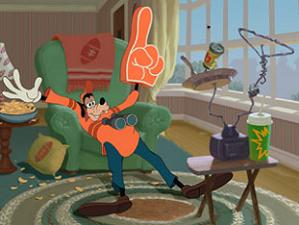
AV: You participated in the Goofy short How to Hook Up your Home Theater and then in the animated part of Enchanted.
MH: Yes, I actually got to work on the Enchanted project with James Baxter. The studio loaned myself and Andreas and a couple of other animators out to James’ studio to work on that for about two or three months. I did Gisele… another girl! It was a lot of fun.
AV: What are your best memories in your career at Disney?
MH: Boy! I suppose, just on the top of my head, aside from the productions and the fun and crazy things that happened during production, I thing some of the fun memories that I have looking back over my career has been a lot of the different people that I had the chance to meet. I’ve met former presidents of the United States, I got to meet Princess Diana when she visited Florida with her boys, celebrities, very interesting and very nice people I had the opportunity to meet. If I wasn’t a Disney animator, I probably wouldn’t have had that opportunity. That’s been very fun!
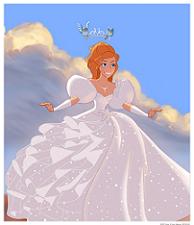
AV: How do you feel now at this point of your career?
MH: I have a lot to look back and I have fond memories of the different productions but I guess, for me right now, it’s still the idea of looking ahead and getting better as an animator. As we talked before, I certainly would like the opportunity to direct again in the future, but in the meantime, as an animator, we can always do a better job and become a better Disney animator.
• In Part 5, we’ll talk about Mark Henn’s animation of Tiana in The Princess and the Frog.


